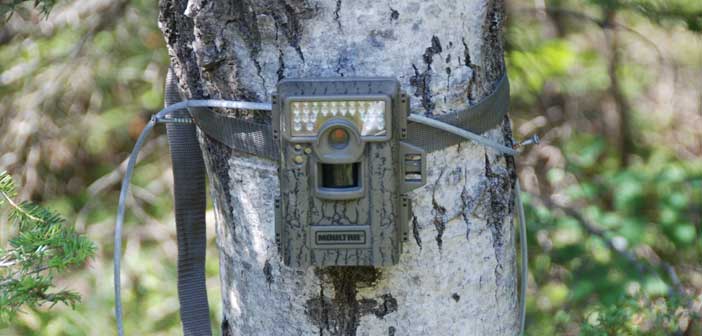MANITOULIN—With the confirmation of a cougar (also known as mountain lion and puma) sighting on Manitoulin Island last week thanks to a trail cam video, this evidence will now become part of a cougar research network database led by Dr. Rick Rosatte, senior scientific researcher with the Ministry of Natural Resources and Forestry) and the man who confirmed that the trail cam shot was indeed that of a cougar.
In the research paper ‘Evidence confirms the presence of cougars in Ontario,’ written by Dr. Rosatte, he explains that in Ontario, 189 probable cougar sightings were documented in Ontario between 1935 and 1983, “but since most of those sightings could not be verified, the question as to whether free-ranging cougars occur on the landscape was still unanswered.” A study was thus initiated between 2006 until 2010 to confirm the existence of cougars in Ontario, comprised of 89 biologists and wildlife technicians, mostly from the then MNR. With a total of 497 sightings between those years (121 of which were from northeastern Ontario), the MNR was able to confirm that cougars do indeed exist in the province.
In some of the areas of the sightings, the report notes, trail cameras were set up by MNR staff. More than 17,000 “camera-nights” were accumulated between April 1, 2008 and December 31, 2010, but no definitive photographs were taken.
“Based on the number of photographs of animals taken by the trail cameras (154,736), the probability of taking a photograph of a cougar on a trail camera in Ontario during the period of 2006 to 2010 was close to zero,” the report states. The fact that Chris Wenz of Michigan was able to capture this shy creature on a trail cam set up on his Manitoulin property in early July could almost be classed as miraculous.
The study also noted a trend in an increase of cougar sightings reported to both the MNR and the Ontario Puma Foundation that points to an increasing presence of cougars in the province.
“As the diet of cougars consists primarily of ungulates, in particular mule deer and white-tailed deer, there is certainly a sufficiently large prey base for cougars in Ontario, which has a white-tailed deer population estimated to be between 400,000 and 500,000,” the study continues.
The study also gives four possible suggestions as to the origins of Ontario cougars: 1) escaped or released captive animals 2) animals that have dispersed into Ontario from areas supporting free-ranging cougar populations or their offspring 3) remnants of native free-ranging cougar population in Ontario and 4) a genetic mix of these sources of animals. It continues to say that the source of southern Ontario cougars may be escaped captive animals while northern cougars may have largely originated from the west.
It is of the opinion of Dr. Rosatte that the majority of cougars in the province are likely a genetic mixture of escaped/released captives, ‘immigrants’ and/or native animals.




